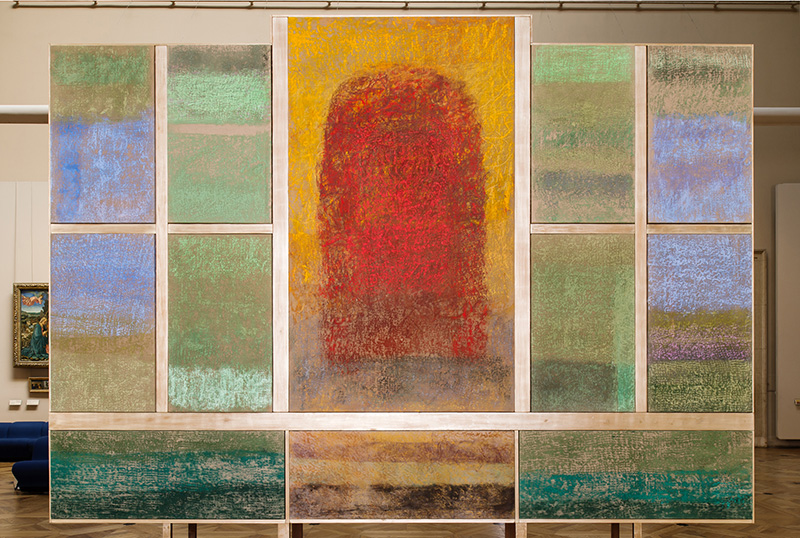ART-PRESENTATION: Monique Frydman
 Monique Frydman attended the École des Beaux-Arts de Toulouse and moved to Paris in the early ‘60s. Since the late ‘70s, Monique Frydman’s exploration of painting has been strictly abstract. Shown for the first time in a public institution in the United Kingdom her solo exhibition surveys over 30 years of the French artist’s career.
Monique Frydman attended the École des Beaux-Arts de Toulouse and moved to Paris in the early ‘60s. Since the late ‘70s, Monique Frydman’s exploration of painting has been strictly abstract. Shown for the first time in a public institution in the United Kingdom her solo exhibition surveys over 30 years of the French artist’s career.
By Efi Michalarou
Monique Frydman’s abstract paintings are a vibrant embodiment of color and light. Soft lines are produced through frottage, a technique for which the artist rubs pastel on to an unstretched canvas that has been placed over a tangle of cord or string, then she often completes a work by adding pigment to the surface, the elegant arabesques of lines created by this process blend into the color-saturated canvas. Only from the ‘80s onwards Frydman started to use intensely rich colors, especially deep dark reds and blues, in her work. By the latter part of that decade she was making works of dazzling luminosity, paintings that have a subtle relationship to the works of artists she admired, such as Claude Monet, Pierre Bonnard and Matisse. “My experience of the painting is quite different, it draws from an origin which is not given anywhere, which has no visible existence, which is not identifiable to any entity, It is through the materials of painting (canvas, pigments, instruments of drawing and color) and the pictorial acts that it engages, that it takes shape. To exist something that shrinks from its origin but persists in the brilliance of the line and the sumptuousness of the colors”. In the opening gallery is on presentation “L’Absinthe” (1989), a monumental triptych painted predominantly in luminous hues of green and yellow juxtaposed with areas of white and pink, its light-drenched green, the color of absinthe*, calls to mind the Water-Lilies series by Claude Monet. Another major work is her double-sided “Polyptyque Sassetta” (2012-13), it was painted in homage to the work of the early Renaissance artist Stefano di Giovanni, generally known as Sassetta. Although Frydman’s panels are apparently without figuration, they somehow convey a compelling human presence. Informed by the work of Pierre Bonnard, Frydman completed a series of paintings entitled “Des saisons avec Bonnard” (2009-10), abstract works with overlapping planes of color that not only evoke the seasons but also the planes of color evident in Bonnard’s works. Although abstract rather than figurative, the presence of structure could be interpreted as traces of the past.
*Absinthe originated in the canton of Neuchâtel in Switzerland in the late 18th century. It rose to great popularity as an alcoholic drink in late 19th and early 20th Century in France, particularly among Parisian artists and writers.
Info: Curator: Ziba Ardalan, Parasol unit foundation for contemporary art, 14 Wharf Road, London, Duration: 7/6-12/8/17, Days & Hours: Tue-Sat 10:00-18:00, Sun 12:00-17:00, http://parasol-unit.org



